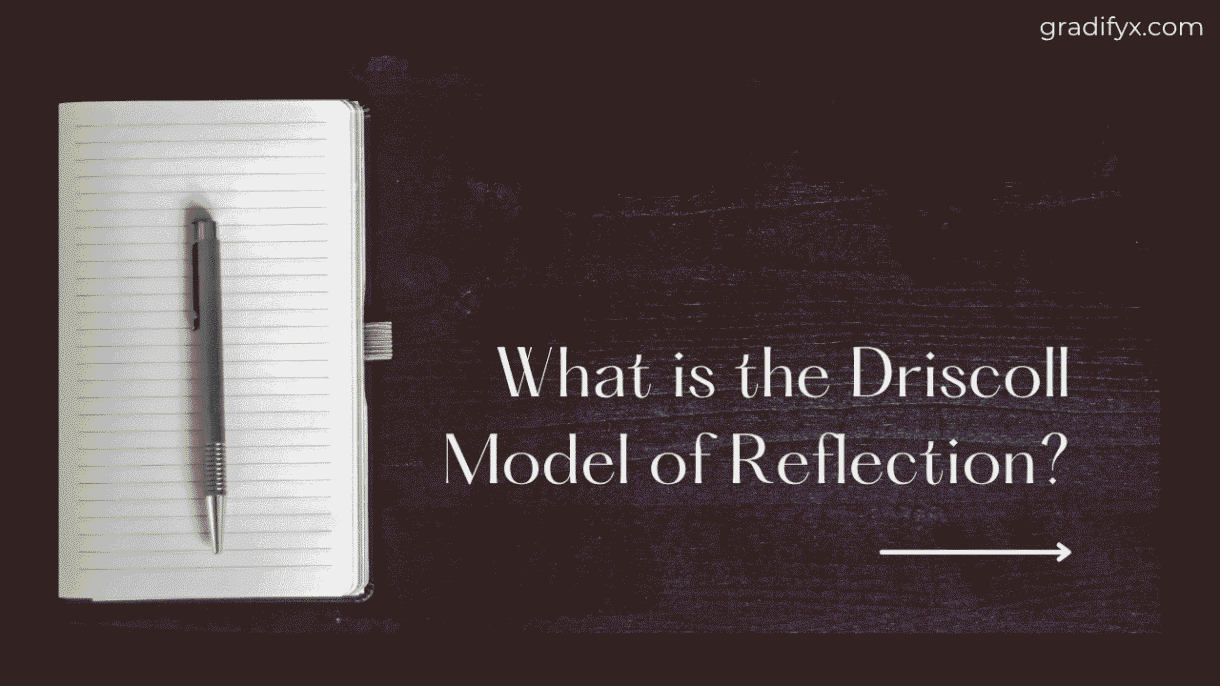
Driscoll Model of Reflection – What? So What? Now What?

What is the Driscoll Model of Reflection?
Did you know that the Driscoll model of Reflection was actually based on a 24-year-old model?
No? Well, that’s where it gets interesting.
This is not just another theory…It’s something that will actually help. The situation doesn’t matter. It can be anything…
A random conversation, something at work, a wrong prescription, or just any of those moments where you think, I could’ve handled that better,” this model will help you reflect and grow. As humans, we learn from our experiences.
What worked and What didn’t? The Driscoll Reflection Model is all about it. In this blog, we’ll discuss the what? So what? Now what? Cycle and learn how it will benefit you in your daily life.
So, What is this Model?
It all started in the 1970s when Terry Borton described the concept “What? So What? Now What?” for the first time in his book “Reach, Touch, and Teach.” This concept was designed as a guide, a straight forward framework to practice critical thinking and self-assessment.
Fast forward to the 1990s (1994 to be exact), Dr John Driscoll picked up Borton’s idea and developed it further. He adapted the model and further modified it to be used in professional practices like nursing, education, and healthcare. What makes Driscoll’s model of reflection different is how direct and user-friendly it is. No complicated process, just follow 3 simple steps, and they will help you pause, process and plan your next move.
The Three Simple Questions
John Driscoll’s model of reflection is built on Terry Borton’s framework of three simple questions – What? So What? Now What? This is why it is also called the what so what now what model of reflection. While it was originally developed for education and healthcare. It can also be used quite effectively in daily life.
What?
Describe What happened.
This is where it all starts. Reflect on the situation. What happened? Focusing on the basic task without analyzing it yet.
Be Specific and Objective.
Prompts to guide you:
- What was the situation or task?
- Who was involved?
- What actions did I take?
- What was the outcome?
Example:
I facilitated a group presentation on patient safety during clinical placement. We had limited time to prepare, and two team members didn’t contribute equally.
So What?
Why it mattered, what you felt, what you learned.
This step is all about your emotional and intellectual response to the situation. This is basically about your experience of the situation.
Prompts to guide you:
- How did this experience make me feel?
- What were the most important aspects?
- What went well? What didn’t?
- Why does this experience matter?
Example:
I felt frustrated and overwhelmed. I realized that I needed to have better communication skills to manage a group dynamic and a role from the very start.
Now What?
What you’d do differently next time.
This is the Final and most crucial step of this model. It is where you reflect on your response and determine how this experience will affect your future actions and decision-making.
Prompts to guide you:
- What would I do differently next time?
- How will I apply what I’ve learned?
- What steps will I take to improve or change?
Example:
Next time, I’ll schedule an initial team meeting to divide responsibilities early and use check-ins to keep everyone on track.
Some Real Examples
Below are two short examples which show how the Driscoll model of reflection can be used.
One example is based on the nursing context, and the other is in a general everyday situation.
Nursing Example:
Situation: During a busy shift, a nurse accidentally gave the wrong medication to the patient.
What?
A Nurse realized during her evening shift, when she was attending to multiple patients, that she gave the wrong medication to one of the diabetic patients.
So What?
This raised some serious concerns about the patient’s safety. She felt anxious and quite guilty, knowing the wrong medicine could affect the patient’s blood sugar levels. It reminded her how important it is to stay active during shift hours and prioritize time-sensitive tasks.
Now What?
She brought this up in the weekly team brief…and suggested a checklist during handovers. The team also decided to create reminders for themselves during such high-pressure shifts to avoid similar mistakes in the future.
This was a classic example of the Driscoll Model of Reflection in nursing. It helped improve both professional practice and patient care.
General Example (A Group Project)
Situation: In a Group Project, One of the students did most of the work while others barely contributed.
What?
The whole group didn’t coordinate with each other properly during the whole project. Only one of the students took too much pressure and ended up frustrated. The result? They couldn’t achieve what they could have.
So What?
The group realized they hadn’t set any goals or expectations. They also admitted that there was a clear gap in communication, boundaries, and teamwork.
Now What?
In the future, the students plan to have an open discussion before any project, and they also realize that if something is not working, then they have to address it before the time runs out.
This example of the Driscoll Model of Reflection shows how it can be used for any situation in your life…
FAQ’s (Frequently Asked Questions)
Is this just for nurses?
Nope, not at all. While Driscoll’s What Model is widely used in nursing and healthcare, it’s not limited to that field. Anyone who wants to reflect on their experiences—teachers, students, managers, creatives, can benefit from it. It’s designed to help you think critically, learn from what happened, and figure out what to do next.
Can I use this for school or life stuff?
Absolutely. Driscoll’s reflection model is simple enough for everyday use, whether you’re writing a school assignment, preparing for an interview, or just trying to make sense of a tough day. It helps break down any experience into three parts: what happened, why it mattered, and what you’ll do moving forward.
What’s the difference between Driscoll and Gibbs?
Both are great, but they work a bit differently. Driscoll’s reflection model focuses on three straightforward questions: What? So What? Now What? It’s quick and to the point. Gibbs’ model, on the other hand, is more detailed, with six stages, including feelings and conclusions. If you want depth, go with Gibbs. If you want clarity and simplicity, Driscoll’s got your back.
Get Your Assignment Now!


0 Comments